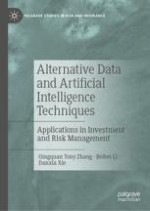This book introduces a state-of-art approach in evaluating portfolio management and risk based on artificial intelligence and alternative data. The book covers a textual analysis of news and social media, information extraction from GPS and IoTs data, and risk predictions based on small transaction data, etc. The book summarizes and introduces the advancement in each area and highlights the machine learning and deep learning techniques utilized to achieve the goals. As a complement, it also illustrates examples on how to leverage the python package to visualize and analyze the alternative datasets, and will be of interest to academics, researchers, and students of risk evaluation, risk management, data, AI, and financial innovation.
